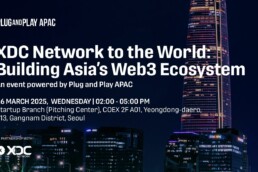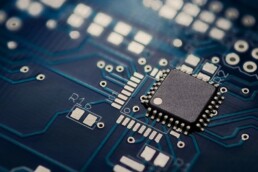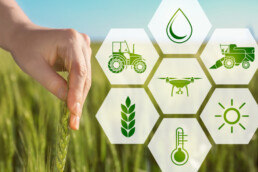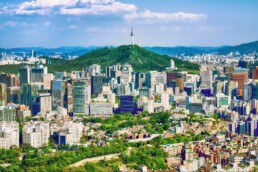The interest in hydrogen technology is growing, with demand increasing rapidly in South Korea. The hydrogen industry in Korea is relatively new, however, it is getting massive support. Major conglomerates in Korea are cooperating to develop a nationwide hydrogen ecosystem. Moreover, they are working with the Korean government to come up with policies to support the development of Korea’s hydrogen industry. South Korea has formed a Hydrogen Committee to help Korean companies enter the global hydrogen market.
Hydrogen Committee in Korea

The Hydrogen Committee is comprised of some of the top conglomerates in Korea such as Hyundai, Lotte Group, Hanwha, POSCO, and SK just to name a few. Some of the roles of the Hydrogen Committee include strengthening cooperation between member companies in the hydrogen industry and hosting global events to bring in foreign investment. They will look to sign partnerships with hydrogen technology companies around the world. In addition, They will work together to invest in the building of facilities for hydrogen production, distribution, storage, and utilization.
South Korea has been late to the game in regard to the hydrogen industry. However, the commitment by the Korean government and conglomerates is a welcome sign to Korea’s development of its hydrogen industry. Therefore, it is looking more and more likely that the next big transformation in the clean energy industry in Korea will be based on the hydrogen economy.
Hyundai Mobis Invests $1.1 Billion into Two Fuel Cell Plants in Korea
We are already seeing top conglomerates investing in the hydrogen industry in Korea. Hyundai Mobis will invest $1.1 billion in two new fuel cell plants in Korea. The goal is to accelerate the hydrogen economy and secure global market dominance. The company operates one fuel cell plant in Chungju with a capacity of 23,000 hydrogen cell systems a year. The new plants will start mass production towards the second half of 2023. The current production targets fuel cell EVs, however, Hyundai Mobis aims to also provide fuel cells to other sectors such as construction machinery and logistics equipment.
“When fully operational, the facilities are expected to produce 100,000 hydrogen fuel cells every year. We will continue to invest more in facilities and strengthen our R&D capability for the development of the hydrogen industry and expand the ecosystem,” said Hyundai Mobis President and CEO Sung Hwan Cho.
Kogas Shifting its Focus to Hydrogen
Kogas (Korea Gas Corporation) has been supplying Korea’s natural gas supply for 40 years. However, now they will be shifting their focus to green energy such as hydrogen. Kogas aims to provide 830,000 tons of hydrogen per year by 2030. It will all start from their hydrogen manufacturing base in Gwangju. In addition, they will build a total of 152 hydrogen fueling stations across South Korea. Their aim is to have a net-zero carbon emission by 2045 with a 20% reduction in carbon dioxide emission by 2030.
Why Korea is pushing for Hydrogen Technology
Currently, around 120 million tons of hydrogen are produced every year. It is expected to reach over 200 million tons by 2030. In addition, studies show that hydrogen production will grow to 500 million tons by 2050. The main issue with hydrogen fuel at the moment is that the majority is consumed near where it is produced which are chemical plants. For hydrogen fuel to reach its full potential as a clean source of energy, it is vital to have a proper supply chain that is also green.
Hydrogen is colorless, odorless, and tasteless. It is produced from fossil fuels such as methane, natural gas, or coal. This type of hydrogen is called grey hydrogen and represents 95% of the quantity that is produced today.
Grey hydrogen is not eco-friendly as it emits more than 10 kgs of CO2 to produce 1 kg of hydrogen. Blue hydrogen sequesters the CO2 that is produced which makes it cleaner. However, most are looking to achieve Green Hydrogen which is produced by renewable electricity powering an electrolyzer to create hydrogen and oxygen from water. As long as the water and power come from a sustainable source, it can be called Green Hydrogen. The ultimate goal is to have a supply chain that can produce Green Hydrogen at scale and at an affordable price.
Hydrogen-Powered Heavy Duty Trucks
South Korea has begun testing 5 Hydrogen-powered fuel cell trucks. One of them is Hyundai’s Xcient. The test trial will last until the end of 2022. CJ Logistics, Hyundai Glovis, and Coupang will participate in the project. The South Korean government will help with subsidies and charging stations. The aim is to have 10,000 fuel cell trucks in South Korea by 2030.
Hydrogen from Plastic Waste
Hyundai Engineering Co., the construction unit for Hyundai Motor Group will build a plant to produce hydrogen from plastic waste. The plant will cost over $330 million and will be located in Dangjin, South Chungcheong Province (Commercial production will start in 2024). The aim of the factory is to produce high-purity clean hydrogen from plastic waste. The plant will process 100,000 tons a year of plastic waste in order to produce 22,000 tons of hydrogen per year. 22,000 tons of hydrogen can power 150,000 hydrogen-fueled vehicles to run over 14,000 km each.
The Hurdles for the Hydrogen Industry in Korea
South Korea has been late to enter the hydrogen industry compared to other first-world countries. Like all other countries that have embraced hydrogen technology, they will have to go through some challenges. The initial cost will be high, however, as technology advances and demand increases the cost will eventually come down. In addition, automation can improve production which will also lower costs. In a decade hydrogen can become as popular as wind and even solar energy. Hydrogen is used as a transportation fuel and is currently very expensive. Consumers currently will have to pay about $10 per kg at a filling station. In order to complete with gas and electric this price will need to be $3 per kg.
The mobility industry in South Korea is looking to find ways to find new forms of sustainable energy and decarbonize and reduce CO2 emissions. To give the mobility industry support, the Korean government has already created incentives through subsidies to accelerate sales of lower-carbon vehicles. However, unless technology can solve the issue in regard to the cost of producing hydrogen, it will take many years before it becomes mainstream.
The cost of electricity accounts for 70% of the product cost of green hydrogen. However, it is not all bad news. Green hydrogen can be purified and compressed to levels where it can be stored in tanks as compressed gas or liquid and distributed. Tankers will be used to transport these tanks. In addition, they can also be moved using gas pipelines for short distances. If South Korea can build the infrastructure, the potential for the hydrogen industry in Korea is massive.
BEVs vs FCEVs in Korea

Currently, BEVs (Battery Electric Vehicles) dominate this market which is why there are so many EV models in Korea available today than ever before. However, cars that are powered by green hydrogen or FCEVs (Fuel Cell Electric Vehicles) are far superior when it comes to recharging times and driving range. For example, less than 1kg of green hydrogen is needed to drive an average car 100 kilometers. In addition, fueling only takes 3-5 minutes. Compare this to an electric car which can take up to 8 hours to fully charge. This is because FCEVs don’t store electricity like a battery. Rather they create it on demand to power the motor.
The Hydrogen Industry in Korea
Hyundai is currently exploring new business opportunities by applying hydrogen fuel-cell systems to trams, trains, ships, buildings, power plants, and urban energy sources. This is a heavy commitment by Hyundai as they plan to replace all of its combustion engine-based commercial vehicle models with EVs. This means all their cars will be either hydrogen fuel or battery EVs. Currently, BEVs and HFEVs account for 1.5% of Hyundai’s global sales. Their aim is to raise the ratio to 30% by 2030. Hyundai’s goal is to achieve carbon neutrality by 2035.
Hydrogen fuel cells have been a technology of great promise. This is why major automakers like Hyundai, Toyota, and Honda see great promise. For example, Hyundai Motor said it will apply the HFEV system to all of its commercial vehicle models by 2028. This includes new commercial trucks and buses. In addition, 78% of automotive executives believe hydrogen fuel cell vehicles will be the breakthrough for electric mobility. Therefore many automakers are looking to increase their production of FCEVs. If production increases it will help bring down the purchase price for consumers.
The real challenge for FCEVs is the lack of infrastructure. A similar challenge battery EVs had to go through a decade ago. For FCEVs to become the breakthrough technology in the mobility industry, a vast network of hydrogen stations is critical. As FCEVs scale in Korea, their infrastructure scales with it. Therefore, it is no wonder that the Korean government is supporting the hydrogen industry in Korea in order to have net-zero emissions by 2050.
Popular
Related Posts






